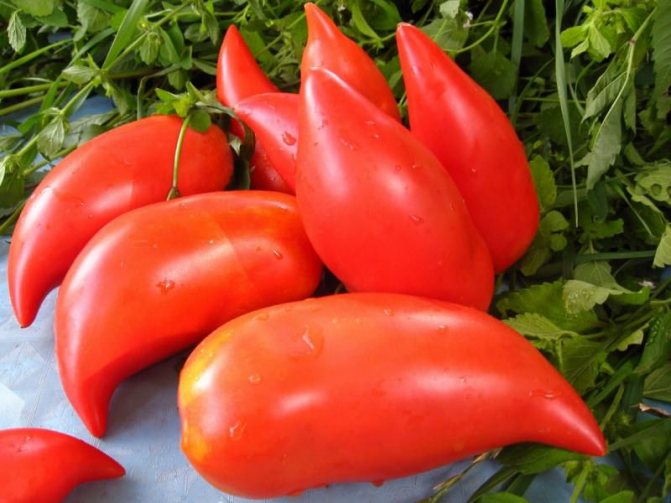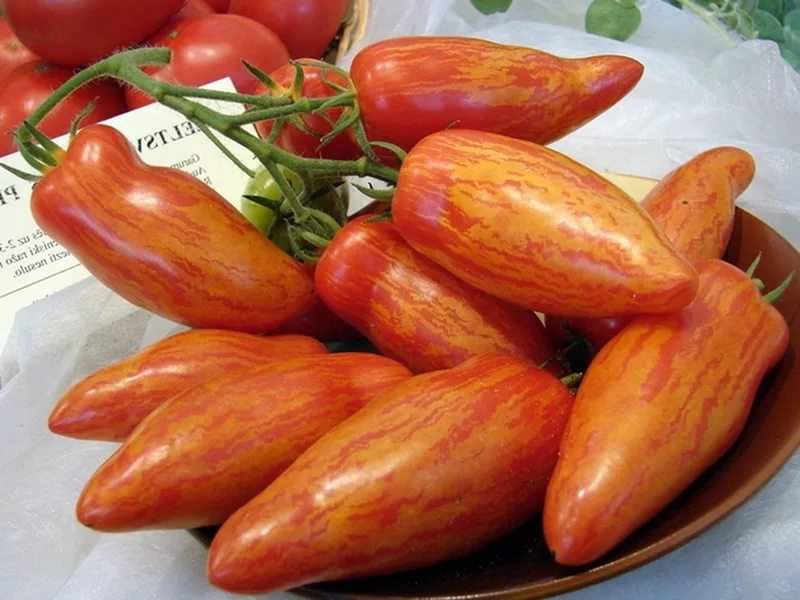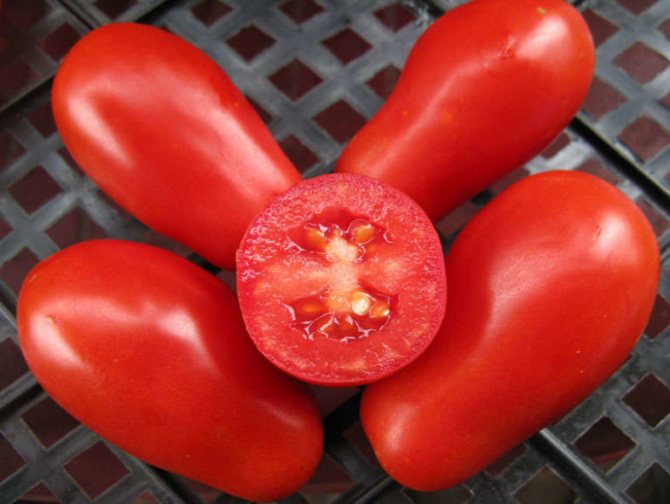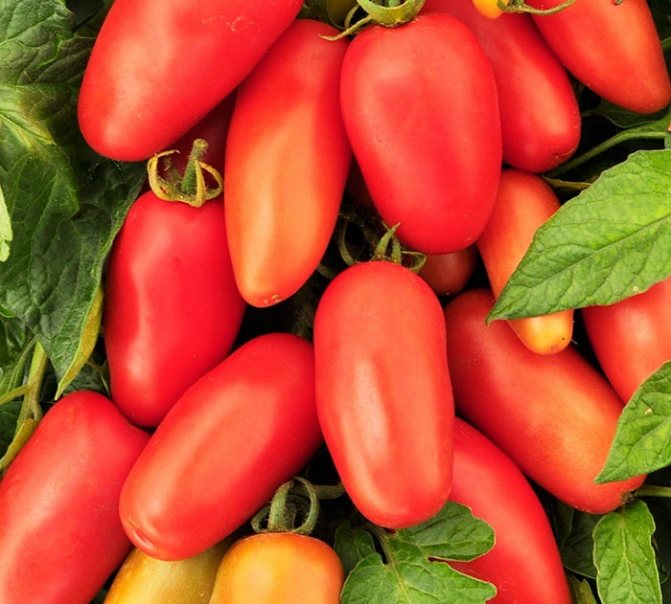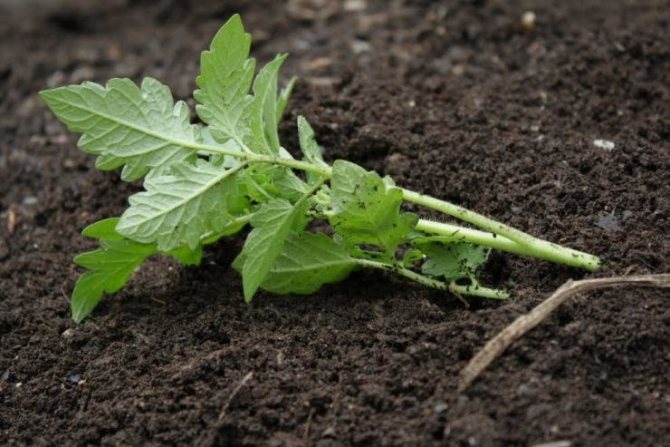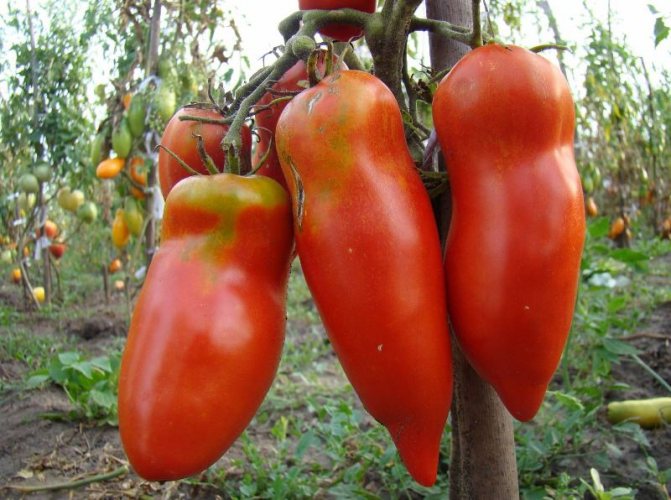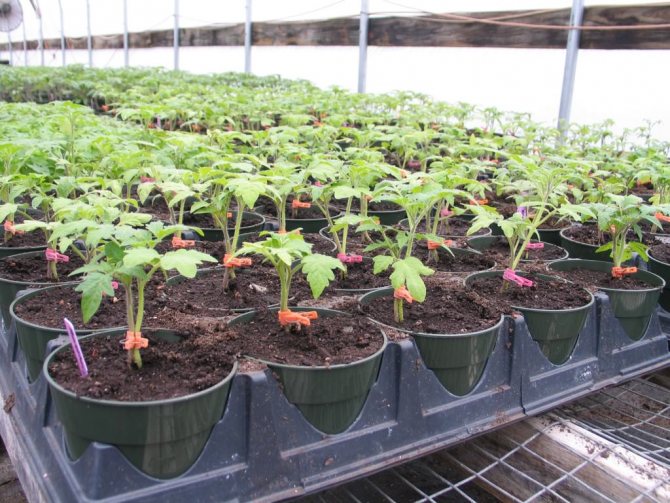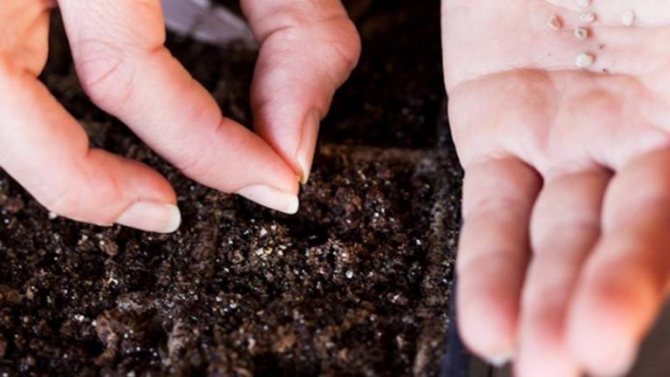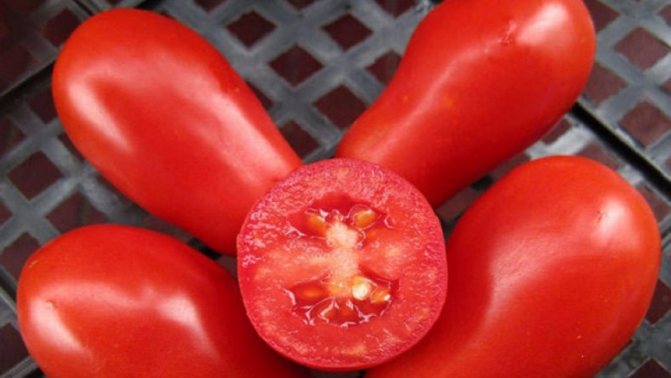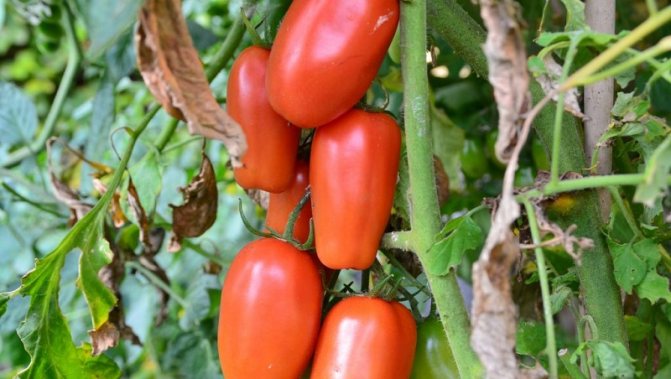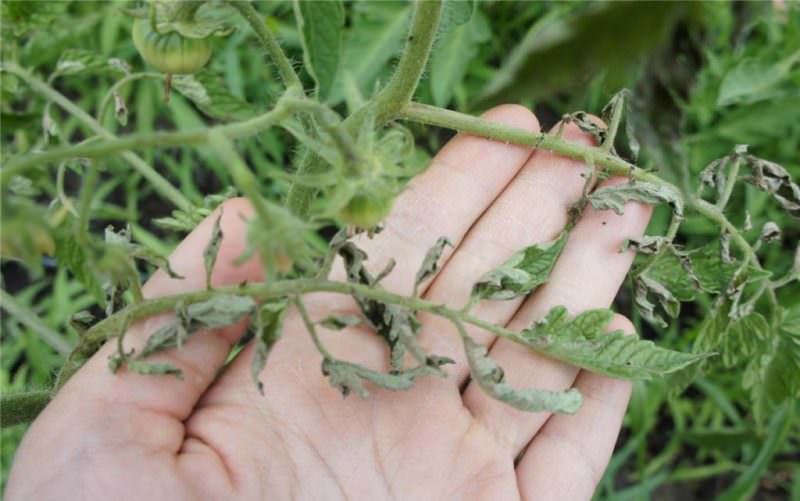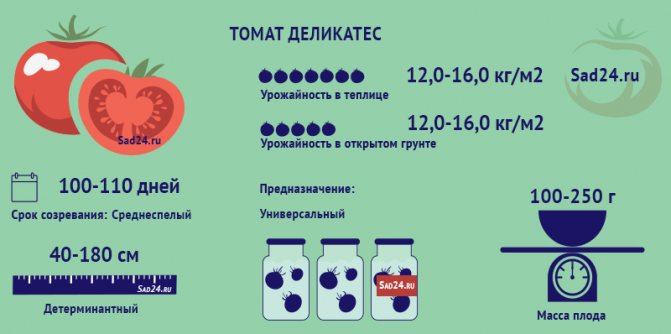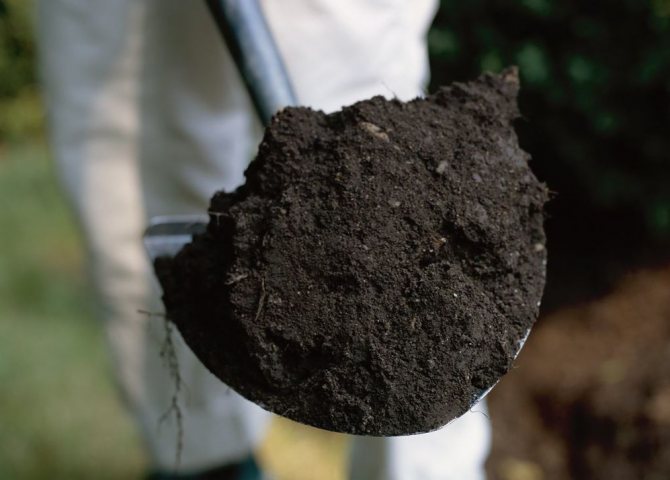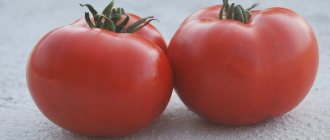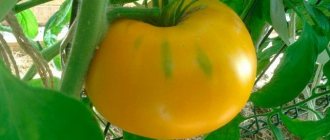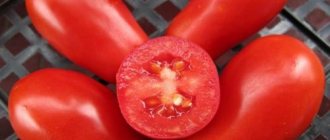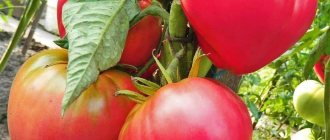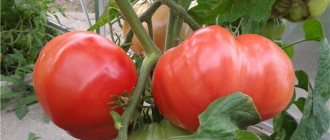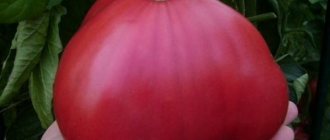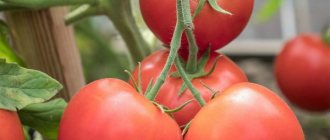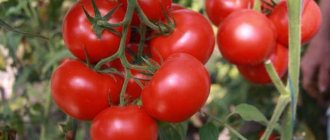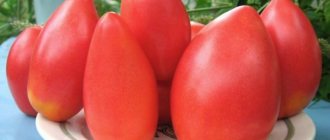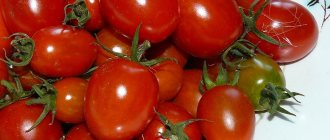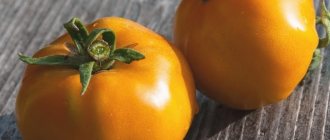Category: Tomatoes
The Moscow delicacy tomato variety has many advantages. He earned his place in the garden. Real gourmets will appreciate its taste, and gardeners will appreciate its unpretentiousness and high yield.
- Top dressing and care of seedlings (video)
- Growing tomatoes
- Care for tomato seedlings after picking (video)
- Opinions about the variety Moscow delicacy
Characteristics and description of the variety
A delicacy tomato variety belongs to the indeterminate type, which needs to be pinched off. The leaves are large, dark green in color, a plant with a powerful stem. The culture is of medium ripening, fruiting is extended - the variety bears fruit until the very frost. The yield is quite high - up to 5 kg of tomatoes can be obtained from one seedling. The main feature that is inherent in the Moscow Delicacy is its high sugar content. The hybrid is suitable for growing in the south of Russia, as well as in the Moscow region. The average weight of the fruit reaches 150 g, the shape is pepper-shaped. The pulp is juicy, sweet.
Expert opinion
Stanislav Pavlovich
Gardener with 17 years of experience and our expert
Ask a Question
Important! This variety of tomatoes should not be confused with the hybrid Moscow creamy delicacy f1.
Description of fruits
There are also discrepancies here. In the Register, the shape of the fruit is described as cylindrical. At the same time, the reviews are full of contradictions - they are called both pepper-shaped and cream.
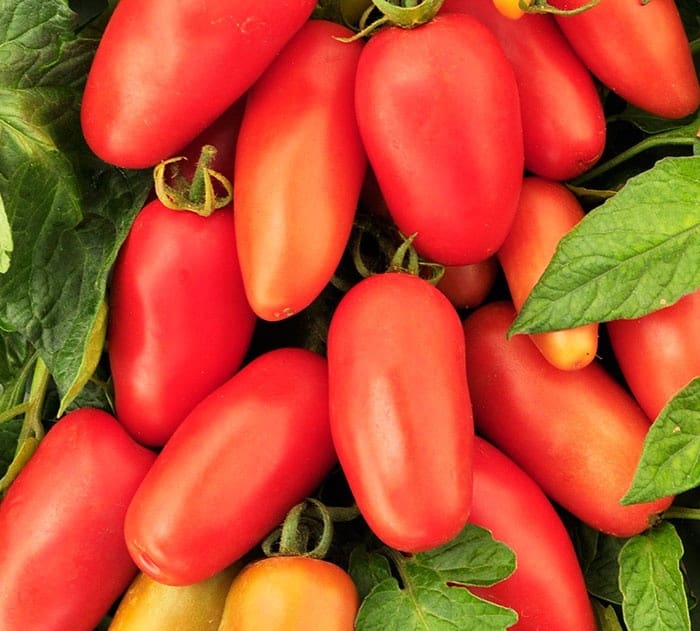
It has been suggested that this is the result of re-grading. The average weight of fruits is 90 g, but they can reach 160 grams.
Note! "Moscow delicacy" has an interesting feature: the weight of the fruit grows with the change of generations of ripening tomatoes, although the opposite relationship is characteristic of tomatoes.
Unripe fruits are green in color with a dark spot at the stalk and turn red during ripening. Number of seed nests 2.
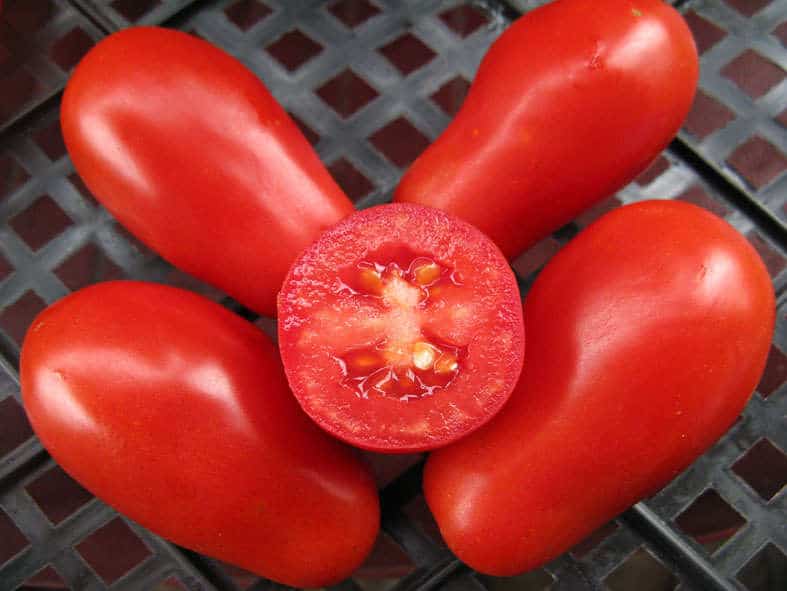

The officially registered yield is 5.7-6.0 kg / m2, which at present can be called a modest value. However, many gardeners of the middle lane indicate the yield obtained at 10 and even 12 kg / m2.
In addition to the salad (official) direction of use, the variety is very good for whole-fruit canning. The dense skin does not crack during heat treatment.
And yet this tomato cannot be called universal in use. The dryness of the fruit makes them unsuitable for juicing and unsuitable for sauces.
Pros and cons of tomato Moscow delicacy
The Moscow delicacy tomato variety has many remarkable features, for which it is chosen by both novice gardeners and experienced farmers. Among the many advantages, the following stand out:
- An unusual shape of tomatoes, similar to a mixture of plums and peppers.
- Strong root system, which eliminates the need to use fertilizers.
- Early maturity of the plant.
- Undemanding care.
- Increased resistance to fungal diseases due to strong immunity.
- Good yield.
- Long shelf life.
- Powerful bush up to 1.8 meters.
- The fruits do not crack during heat treatment.
- Used for commercial purposes.
There are practically no disadvantages of this culture.Gardeners highlight only one negative aspect of this tomato variety, which is associated with the strong growth of the bush. For this reason, the plant needs periodic tying. In addition, some gardeners note that the Moscow delicacy variety is susceptible to late blight.
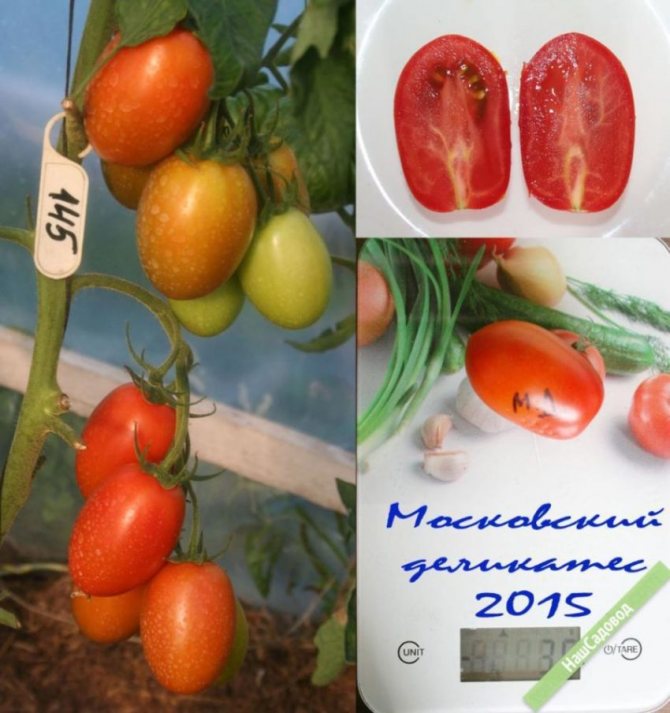

Advantages and disadvantages
Almost everyone who has planted the Moscow delicacy claims that this variety has many advantages in comparison with other varieties of tomatoes.
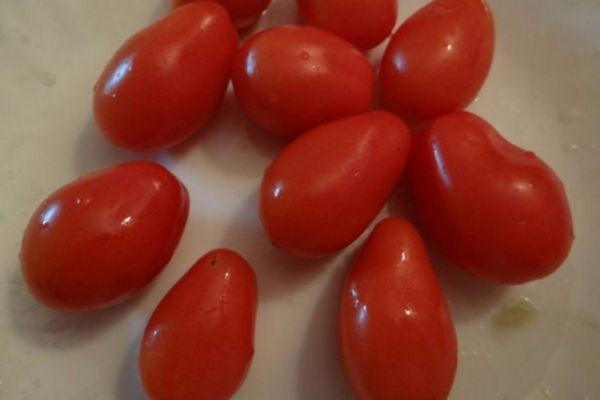

The main benefits of tomatoes include the following:
- long duration of fruiting;
- resistance to common tomato diseases;
- large and juicy fruits;
- ease of care when growing;
- the ability to collect 2-3 kg of ripe fruits from one bush.
Due to the above advantages, this variety is popular among vegetable growers. However, despite all the advantages, the Moscow delicacy has two disadvantages:
- rotting of ripe tomatoes due to waterlogged soil;
- the appearance of apical rot with a close arrangement of bushes.
The nuances of growing a crop
Seeds for seedlings are sown two months before planting in open ground. However, before this, the gardener should prepare the planting material and take into account the peculiarities of growing a delicacy crop. A lot depends on the quality of the seedlings: further fruiting, how well the tomatoes will take root, and also how quickly they will grow.
Seed preparation
In the southern regions of Russia, tomatoes are grown through sowing seeds directly into open ground, but in most cases the seedling method is used. Seeds are sown for seedlings 60 days before transplanting into open soil. Seeds must be carefully selected - dark and damaged specimens are removed. Pre-planting material is disinfected using a weak solution of potassium permanganate. For this, the seeds are placed in liquid for 20 minutes. For better germination, growth simulators and aloe juice are used. It is worth noting that for reliability, the beds should also be disinfected.
See also How to plant tomato seeds for seedlings at home
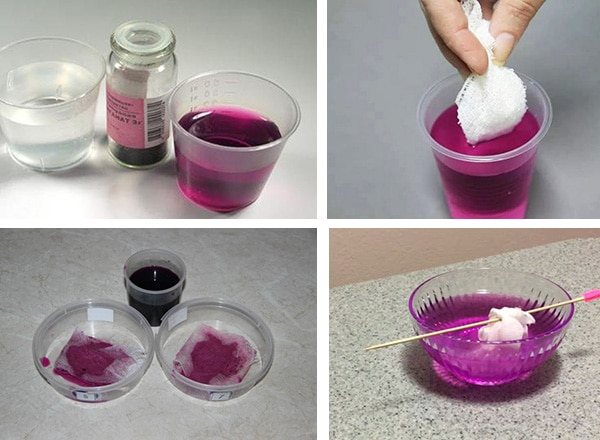

Capacity and soil
The soil for the Moscow delicacy should contain peat, sand and wood ash, as well as be loose and fertile. For this, nitrogen and phosphorus nutritional mixtures are added to it. All components are mixed and disinfected with potassium permanganate and steamed for 15 minutes in a preheated oven. Tomatoes are no longer fertilized before picking. Tomatoes are sown in a spacious wooden box or individual pots. Planting containers must contain drainage holes.
Sowing
The selected and processed seeds are buried by 2 cm, maintaining a distance between the specimens of 3 cm. Sprinkle on top with soil, gently level and moisten with settled water. Next, the seedlings are covered with foil or glass to create greenhouse conditions. The container with the planting material is left in a lighted and warm room at a temperature of at least 23 degrees. The topsoil is moistened as it dries - it should be moderately moist.
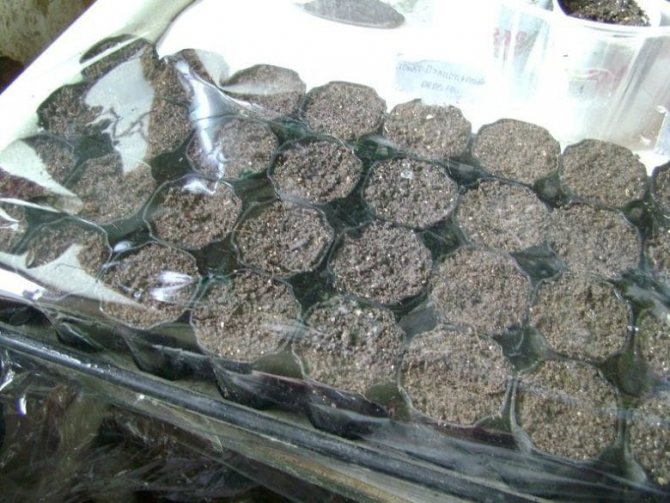

Further care of seedlings
After the entrances, the seedlings should be provided with sufficient lighting, so the containers are placed on the windowsill, but avoiding direct sunlight. Daylight hours should be 15 hours. The soil should be kept moderately moist, preventing the development of fungus and rot. After irrigation, the soil is loosened. The pick is carried out after the appearance of the second true leaf. Immediately before transplanting tomato seedlings to a permanent place, it must be hardened: for this, the air temperature is lowered, the soil is dried and the pots are periodically taken out into the open air. Hardening helps young seedlings to adapt more quickly to outdoor conditions.
Transfer to a permanent place
Two months later, the seedlings are transplanted into the garden.By this time, the seedlings reach 40 cm in height. A transplant to a permanent place is carried out when the soil has warmed up enough and the threat of a night temperature drop below 10 degrees has passed. Since the variety has a tendency to stretch and outgrow strongly, it is recommended to plant the seedlings at an angle of 45 degrees or place them in the hole to the very leaves. For 1 sq. m place up to three plants. The distance between the seedlings is 50 cm, between the rows - 70 cm. The holes are dug up to 20 cm deep, pre-watered abundantly with water. After transplanting, young plants are again watered with warm water and left so for one week.
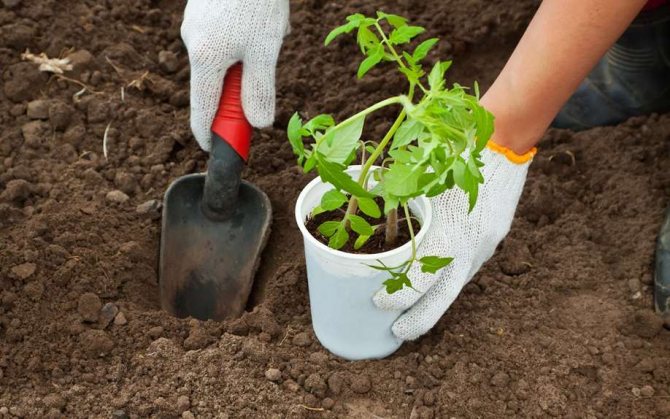

Landing technology
Growing tomatoes Moscow delicacy is a simple process. Many people call these tomatoes "the lazy variety", because they do not require even half of the steps that are usually used to grow tomatoes.
At the beginning, feeding and hardening of tomato seedlings is performed. If you do this correctly, the quality and yield of tomatoes will be much higher.In the beginning, fertilizing and hardening of tomato seedlings is performed. If done correctly, the quality and yield of tomatoes will be much higher.
Growing tomatoes Moscow delicacy:
- The first step is to prepare the seedlings, for this the seeds are treated with a solution of potassium permanganate and planted in boxes with specially prepared soil. After germination of seeds and the formation of a pair of real leaves on the tomatoes, they are transplanted into separate pots.
- Further, when the weather improves, the culture is planted in open ground. A garter peg is installed near each hole.
- It is not necessary to fertilize the powerful bushes of the Moscow delicacy. He often feels great without additional feeding.
- It is better to form the Moscow delicacy in two bushes.
- Do not forget to constantly remove weeds as they are the main threat for this tomato.
- All leaves must be removed from the bottom of the tomato stems. This will allow the wells to be better ventilated.
- Water this tomato quite often with warm water.
As you can see, caring for a Moscow delicacy does not imply anything that a beginner could not cope with. This tomato can be planted, and remember about it only at the time of watering and harvesting.
The only pest dangerous for this variety is the root knot nematode. This insect penetrates the plant stem through the roots, and lays the larvae in it along with the larvae, which are toxins for tomatoes. The bush becomes covered with thickenings - houses for larvae, and eventually dies.
It is impossible to drive out such a parasite, therefore, the affected tomatoes must be removed, and the ground after them must be treated with disinfectants. You can prevent such a disease by planting garlic next to tomatoes.
Shrub Care Tips
The gourmet tomato variety needs pinching, garter and thinning. The bush is formed into two stems and tied to a vertical support. The culture does not require abundant feeding - for stable fruiting, it is enough to follow all agrotechnical measures and fertilize the soil in advance before planting tomatoes. In addition, tomato bushes require regular drip irrigation with warm water (about twice a week, even less often in rainy weather). You should also periodically loosen the soil and remove weeds. Mulching allows you to retain moisture - for this purpose, they take straw or peat.
See also Tomatoes Petrusha Ogorodnik: yield and cultivation features
Description of bushes
Indeterminate plants of the "Moscow delicacy" can reach a height of 180 cm. Optimal is their formation in 2 stems. The inflorescence is of a simple and intermediate type. The first is tied over 9-11 sheets and then after 3-4. Bushes need a garter and regular removal of stepchildren.
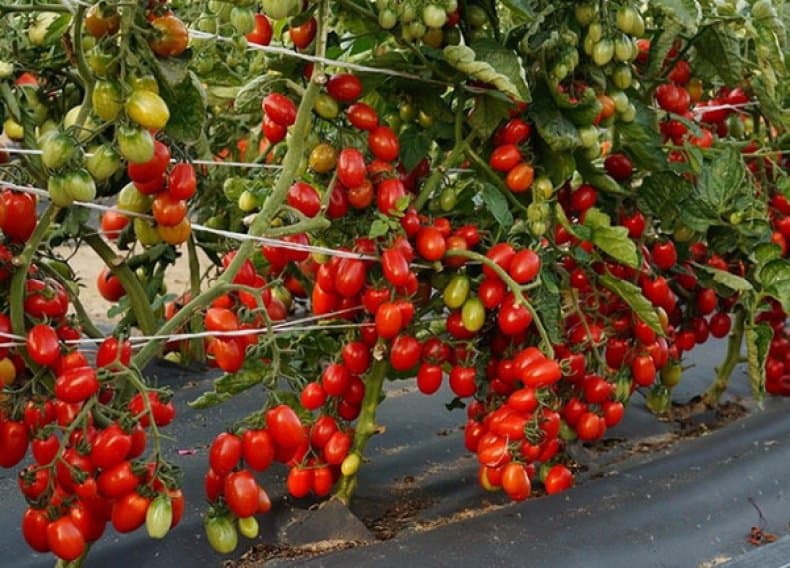

A month before the onset of cold weather, it is necessary to pinch the growth point, otherwise the newly formed bunches will not have time to ripen and will take nutrients from the growing fruits.
Disease and pest control measures
The tomato variety Moscow Delicacy has an increased immune defense against various diseases. However, this does not exclude the need to take a number of preventive measures:
- before sowing seedlings, care should be taken to ensure that the soil and seed is well disinfected;
- quite often a nematode parasitizes on bushes with tomatoes. When the first signs appear, you will need to immediately get rid of the affected plants;
- to prevent the invasion of pests, garlic should be planted nearby;
- before planting, wood ash is introduced into each hole, which is the prevention of late blight.
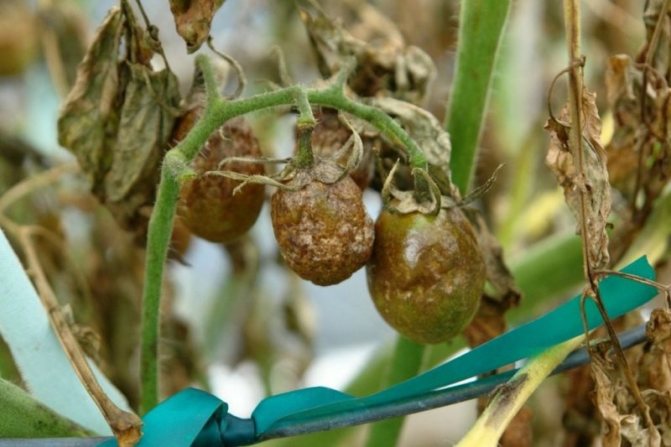

Late blight
Also for tomatoes of the Moscow Delicacy variety are a great threat to aphids and whiteflies. A soap solution is used against aphids, and in advanced cases, general-purpose insecticides. Plants with a pronounced aroma help from whitefly: calendula, marigolds, lavender and so on. Various traps are no less effective.
Planting plants in the ground and rules for further care
The timing of planting "Moscow Delicacy" is selected depending on the climatic conditions of the growing region. It is important to take into account that the warm season is enough for the ripening of a mid-season tomato variety. If you are not sure, then seedlings are planted in greenhouses or hotbeds.
For the comfortable development of tomatoes, the planting scheme is maintained with parameters 50 x 40, and the planting density should not exceed 3-4 bushes per 1 sq. meter of the area of the garden.
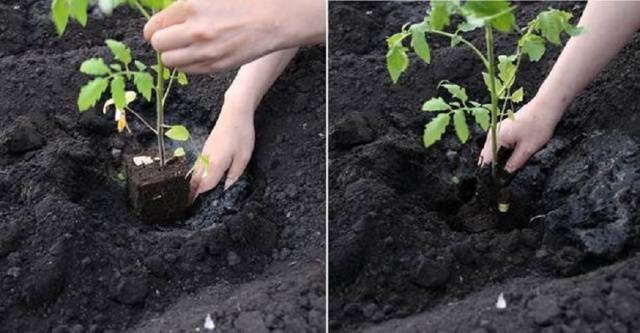

At the time of planting, a support is installed in the hole, to which the seedling is tied.
Important! Tomato beds should be placed in lighted areas with good wind protection.
After a period of adaptation, the gourmet tomato seedlings are given regular care, which includes:
- Timely watering tomatoes with warm water. It is good to postpone this activity in the early morning or evening after sunset. Delicate plants do not like sunburn from water droplets.
- Removing leaves. The lower ones are removed so that the ground in the holes is also ventilated. This gives good air permeability to the roots of tomatoes and proper development of plants. In the future, all dead or overgrowing lower leaves are also subject to removal.
- Weed removal and loosening. It is necessary to loosen the holes of tomatoes carefully so as not to damage the roots. After loosening, you can lay a layer of mulch.
- Obligatory timely tying of grown tomato stems. In this case, care must be taken not to squeeze the trunks, otherwise the bush can be easily injured.
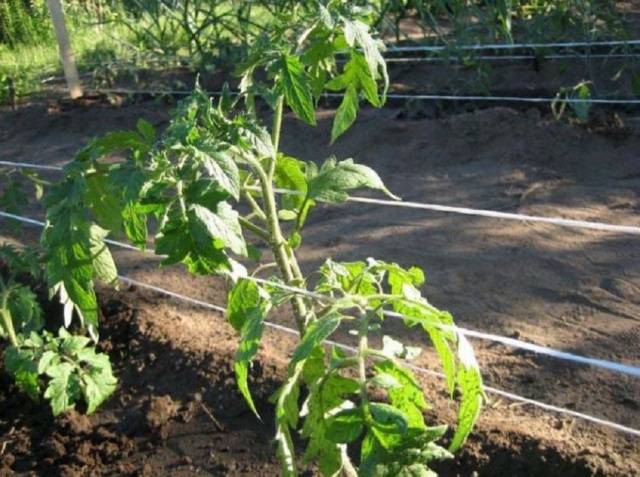

The formation and fixation of the aboveground parts is also needed so that the bush does not break under the weight of the fruit. Be sure to pinch and remove side branches on the bushes of this tomato variety.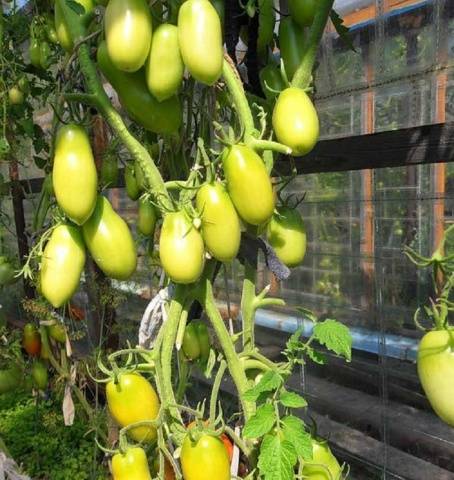

- Feeding tomatoes "Delicacy of Moscow" with high-grade mineral fertilizers and organic matter with the obligatory alternation of compositions.
- Systematic preventive treatment of tomatoes with copper-containing compounds to prevent the spread of fungal infections.
Separately, it is worth dwelling on the prevention of damage to tomatoes of the variety by late blight. This disease brings a lot of trouble to vegetable growers, so timely measures taken will help prevent its spread on the site. If this is not done, then you can lose a significant part of the harvest in a matter of days. For gardeners you will need:
- Regularly inspect gourmet tomatoes in order to notice the first signs of the disease in time.
- For the purpose of prophylaxis, treat the bushes of the "Moscow delicacy" with folk compositions or finished preparations.
Folk wisdom advises using an infusion of garlic with kefir for these purposes. It is prepared from 50 grams of finely chopped garlic cloves, one liter of kefir (fermented) and 10 liters of pure water.
The second option is dairy spraying of tomatoes. Add 25 drops of a pharmacy iodine tincture to one liter of serum, mix and pour into a bucket of water.
Of the chemicals, according to gardeners, when signs of late blight appear on Moscow delicacy tomatoes (see photo), they help well:
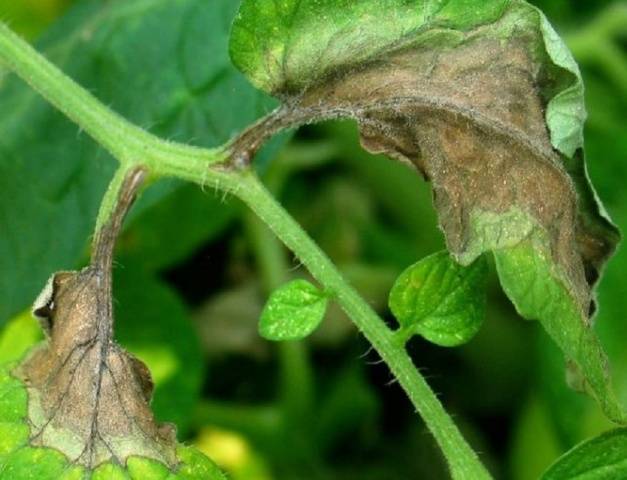

- "Penkoceb";
- Infinito;
- "Acrobat-MC";
- "Ditan M-45";
- Metalaxil.
The usual consumption of solutions is 0.5 liters per 1 sq. meter of the garden. Tomato processing is carried out in accordance with the general rules. In rainy seasons, the number of sprays of tomatoes is increased up to 6 times, for normal weather conditions 3-4 times are enough.
By following simple recommendations, you will get an excellent harvest of delicious tomatoes.
And some more information in the video:
Cleaning and storing a tomato
The first crop is harvested 120 days after sowing seeds for seedlings. The last tomatoes are harvested while still green before freezing. For long-term storage of tomatoes, it is recommended to harvest them at the stage of technical maturity, and if transportation is required, the fruits are harvested during milk ripeness. The harvested crop is stored in a dry and ventilated room, in wooden boxes or cardboard boxes, which are filled in advance with sawdust or straw. Tomatoes of the Moscow Delikates variety are stored with the stalks upward. Before storage, the fruits are inspected for damage and dark spots on the peel.
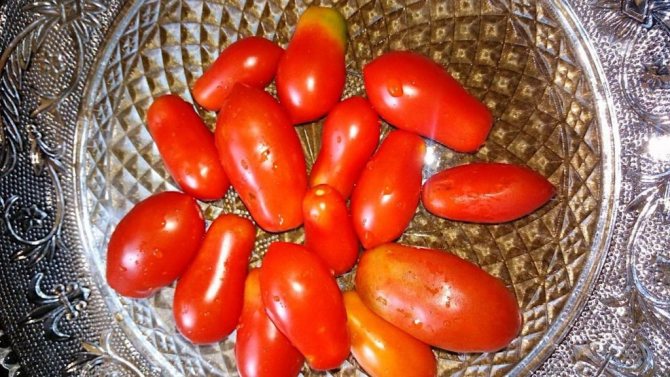

Stages of growing tomato
Let's list the key points of this process:
- seed preparation and germination;
- sowing seedlings; growing seedlings;
- rooting of seedlings;
- aftercare of plants.
Next, we denote the time frame of the main procedures for greenhouse cultivation in the middle lane:
- seed treatment and planting them for germination - March 3;
- sowing germinated seeds - March 6;
- expected shoots - March 10;
- planting seedlings in greenhouse soil - May 10.
If open ground is supposed, then all terms are shifted 4 weeks later. Such a shift can be made by two weeks if temporary shelters from the frame and spunbond are provided for the seedlings.

